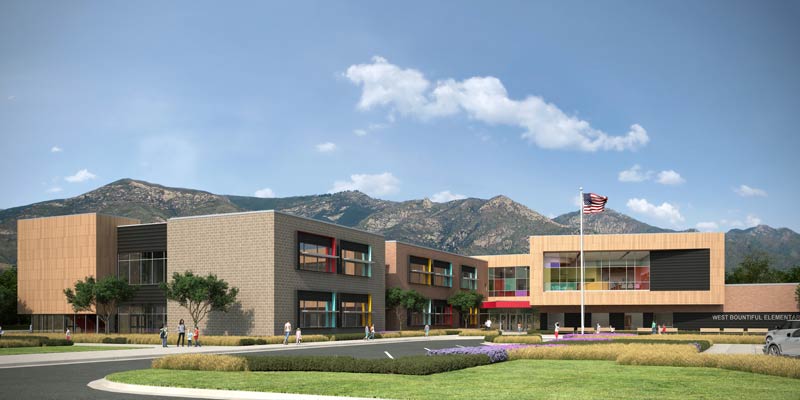The beauty of considering net-zero-energy ‘s potential to shift building industry norms is that it is not based on implementing “state of the art” technology, but is simply based on what has been described as “state of the shelf” technology and strategies by the New Building Institute’s CEO, Ralph DiNola (https://www.architectmagazine.com/practice/what-it-takes-to-go-net-zero_o)
Net-zero projects are on the rise. The momentum is building, particularly in K-12 schools across the country. Why? Owners are seeing the potential operational and maintenance economic savings, and also the documented side benefits. People, as they are living, working, collaborating, creating, and studying in these high performing buildings are experiencing increased health, well-being and productivity benefits. A building that performs at net-zero on an annual basis, with one hundred percent of the project’s energy needs being supplied by on-site renewable energy on a net annual basis, is by nature resilient, and the perfect springboard for integrating regenerative strategies which further shifts the building industry status quo.
The Department of Energy (DOE), in partnership with the National Renewable Energy Laboratory (NREL), is encouraging the K-12 sector to achieve net-zero on their construction projects. Interestingly, their message to school districts is that K-12 schools can achieve a net zero project within the construction budget of a conventional school. The DOE’s website reports that the “K-12 sector alone spends $6 billion annually in the U.S. on energy bills, more than textbooks and computers combined, and second only to teacher salaries. Reducing energy usage by 20% across the education sector would result in energy cost savings of more than $3.3 billion that K-12 schools, colleges, and universities can better spend on educating students.” (https://www.energy.gov/eere/articles/pathway-zero-energy-schools)
Educators are recognizing the powerful opportunities created for teaching and learning in a net-zero school by enabling the integration of learning, design, sustainability and environmental stewardship. Students learn to collaborate and lead in achieving measurable zero energy goals. There is an anticipated ripple effect in the broader community including students, teachers, staff and parents.
The synergistic benefits that K-12 schools are experiencing can easily be applied to other building types. Case studies and technical details are found in ASHRAE’s Advanced Energy Design Guide for K-12 School Buildings, published in January 2018.
MHTN Architects is pleased to be currently participating in the peer review of the AEDG for Small to Medium Office Buildings Achieving Zero Energy. We have been looking forward to getting this sneak peek, and excited to share strategies of implementation with our clients.
By Sarah Winkler, AIA, SE, LEED AP
Project Architect, Associate: Predesign & Programming Leader, NZE Environments Leader

